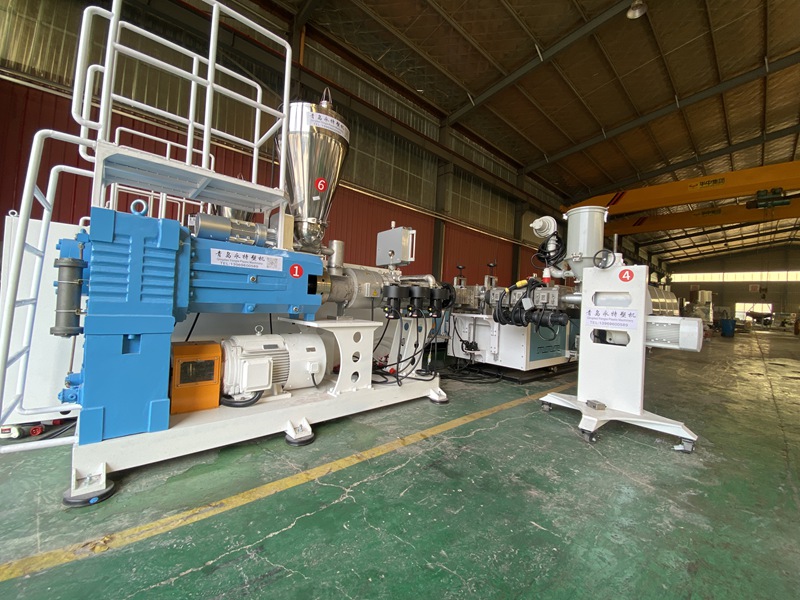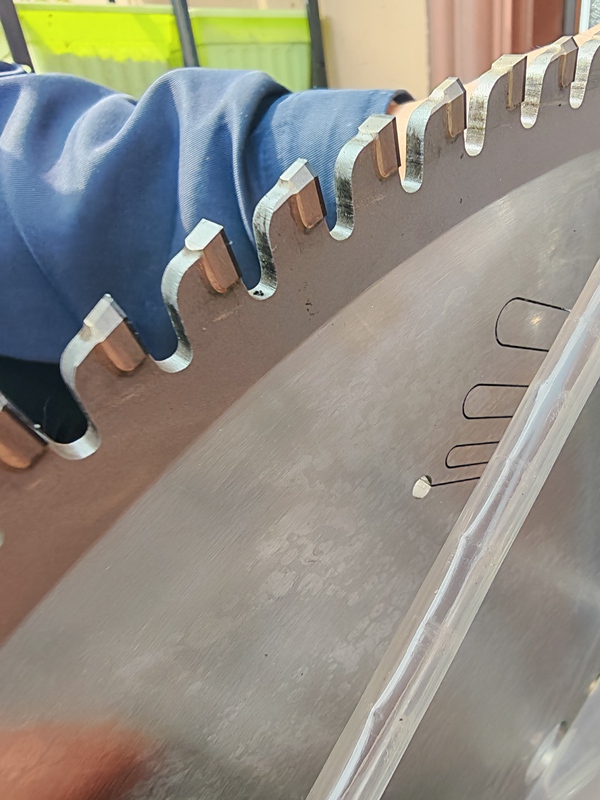How to solve the cutting problem of WPC decking?
In the production of WPC decking profiles, the cutting surface of WPC decking often has problems such as rough edges, cracking, carbonization, water absorption and expansion, which not only affect the appearance, but also may shorten the service life. The following explains the problem types, causes and targeted solutions to help accurately solve the defects of the cutting surface:
|
problem types |
Typical manifestations |
Core causes |
|
Rough edges / burrs |
There are small debris and exposed fibers at the edge of the incision |
1. Blade is blunt or tooth type is not suitable (coarse teeth are easy to pull fibers) 2. Cutting speed is too fast, resulting in material tearing |
|
Cracking / delamination |
Longitudinal cracks or material delamination appear near the incision |
1. Stress concentration is not released during cutting 2. The moisture content of the floor is too high or the material is aging and brittle |
|
Carbonization / coke black |
The cutting surface is locally blackened and scorched |
1. Heat accumulation during laser cutting or high speed cutting 2. The saw blade is overheated due to friction with the material |
|
imbibition |
The cutting surface becomes thicker and the edges curl up after a period of use |
1. The cutting surface is not sealed, and the wood fiber is absorbed by moisture 2. High environmental humidity and poor ventilation |
|
Dimensional deviation / oblique edge |
The incision is not vertical or the size does not match the design |
1. Tool positioning is not accurate (such as the saw blade is tilted) 2. The direction of advance is offset during operation |

1. Tool optimization
· Replace the fine-tooth alloy saw blade (number of teeth is greater than or equal to 80T), and it is recommended to choose the inverted hook tooth with a tooth Angle of 30°-45° to reduce the tearing of wood fibers.
· The speed of the handheld circular saw should be controlled at 3000-4000 rpm to avoid edge cracking caused by high speed friction.
2. Auxiliary processes
· Before cutting, apply masking paper on both sides of the marking line and use tape tension to fix the surface fiber. After cutting, remove the edge that can be taken away.
· For ultra-thin floors (<5mm), double-layer pads (such as density boards) can be used to clamp the floor and reduce the edge collapse through cushioning.
3. Post-processing
· Mild burr should be lightly ground with 180 mesh sandpaper; severe burr should be milled along the cut edge by 0.5mm and then polished.
1. Stress release
· When cutting the long strip floor, drill release holes of φ3-5mm every 30-50cm in advance to avoid internal stress concentration when cutting straight.
· Before cutting the curve, drill a guide hole at the corner and then cut it step by step with the curved saw to reduce tearing at the corner.
2. Material pretreatment
· Check the moisture content of the floor, if higher than 8%, ventilation and drying to the standard value (the moisture content of wood plastic floor should be less than 6%).
· Avoid cutting the aged and hardened floor and use it in areas that do not require processing.
3. Reinforcement treatment
· The cracked incision can be injected with epoxy resin along the crack, clamped and cured with a fixture, and then polished flat.
1. Control cutting heat
· When laser cutting, reduce the power (e.g., from 80W to 50-60W) and increase the cutting speed to 100-150mm / s to reduce local heat accumulation.
· When cutting with a common saw, pause the operation every 5-10 minutes and blow away the saw blade and debris at the cut with compressed air to reduce the friction temperature.
2. Cooling assistance
· When cutting in batches, a miniature spray device can be installed next to the saw blade to spray a small amount of water or alcohol for cooling (make sure the floor dries later).
· Carbon marks can be wiped with fine sandpaper dipped in alcohol, or filled with carpenter's putty and covered with paint of the same color.
1. Sealing treatment
· Within 24 hours after cutting, two-component polyurethane sealant is applied on the surface and edge of the cut to form a waterproof film with a thickness of about 0.3-0.5mm.
· If you want to pursue beauty, you can choose the wood-plastic special repair crayon with a color similar to the floor to fill the cut, and then use a hot air gun to slightly melt the wax layer to seal.
2. Moisture-proof layer superposition
· During installation, PE moisture-proof film is added under the cutting surface. The edge of the film exceeds the cut by 5-10cm and is fixed with tape to block the upward infiltration of moisture.
· In high humidity environment (such as toilet), it is recommended to spray nano waterproof coating on the cutting surface to improve long-term moisture-proof performance.
1. Tool calibration
· Check the verticality of the guide rail of the push saw regularly, and the error should be less than or equal to 0.1mm/m; the handheld circular saw can be equipped with a right-angle guide plate to assist positioning, so as to ensure the verticality of the cut.
· Use electronic ruler or laser marking instrument to reduce the error of manual marking (accuracy up to ±0.5mm).
2. Step-by-step cutting
· For thick floors (>15mm), the layered cutting method is used: first cut the upper surface thickness of 2/3, and then cut through the back after flipping the floor to avoid uneven force caused by single cutting.
· When cutting the shape, first cut the rough and reserve a margin of 2-3mm, and then polish it to the size according to the marking line.
As professional manufacturer for WPC machine, Sure equip special designed cutting machine for WPC decking profile making machine, the cutting machine equip with high speed cutting blade with excellent quality, equip with servo motor and non dust cutting system.
the cutting section is smooth without any damage, the cutting process is low noise, non-dust, and automatic.
